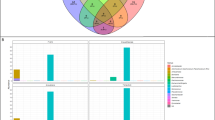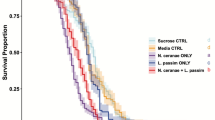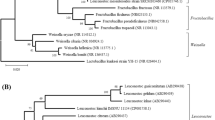Abstract
Streptococcus apis was first isolated and briefly described by Maassen1. This organism occurred in most of the cases of European foul-brood (Gutartige Faulbrut) of bees which he studied. White2 and Borchert3, both of whom described this species, found that the cultures studied by them coagulated milk with subsequent digestion of the casein, and liquefied gelatin. Similar information with respect to this species is given by Bergy4. Curiously enough, no differences among various strains of this organism have been recorded.
This is a preview of subscription content, access via your institution
Access options
Subscribe to this journal
Receive 51 print issues and online access
$199.00 per year
only $3.90 per issue
Buy this article
- Purchase on Springer Link
- Instant access to full article PDF
Prices may be subject to local taxes which are calculated during checkout
Similar content being viewed by others
References
Maassen, A., Arb. Biol. Abt., (Anst. Reichsanst.) Berlin, 6, 53.
White, G. F., Bull U.S. Dept. Agric., No. 810 (1920).
Borchert, A., Z. Bakt. Abt., (2), 92, 179.
Bergy, D. H., ” Manual of Determinative Bacteriology”, Fourth edition. Williams and Wilkins, Baltimore (1934).
Tarr, H. L. A., Bee Craft, 17, 310 (1935). Archiv. Bienenkunde (in press).
Tarr, H. L. A., Ann. Appl. Biol. (submitted for publication, 1936).
Author information
Authors and Affiliations
Rights and permissions
About this article
Cite this article
TARR, H. The Organism of European Foul-brood of Bees. Nature 137, 151–152 (1936). https://doi.org/10.1038/137151b0
Issue Date:
DOI: https://doi.org/10.1038/137151b0
This article is cited by
Comments
By submitting a comment you agree to abide by our Terms and Community Guidelines. If you find something abusive or that does not comply with our terms or guidelines please flag it as inappropriate.



